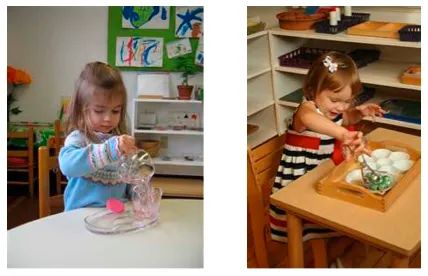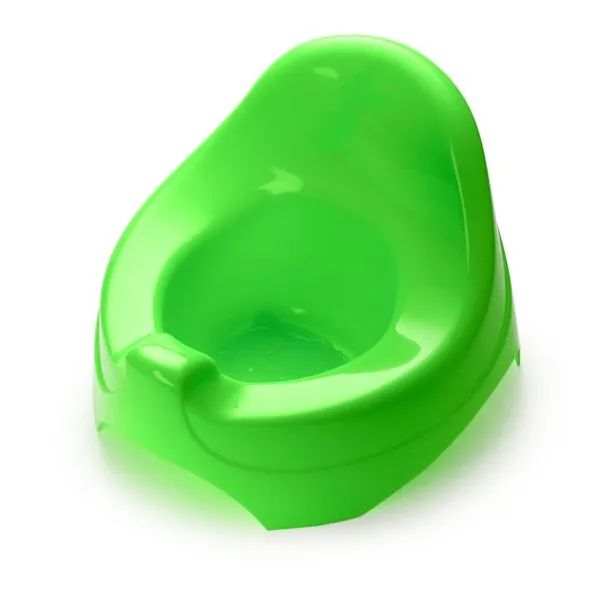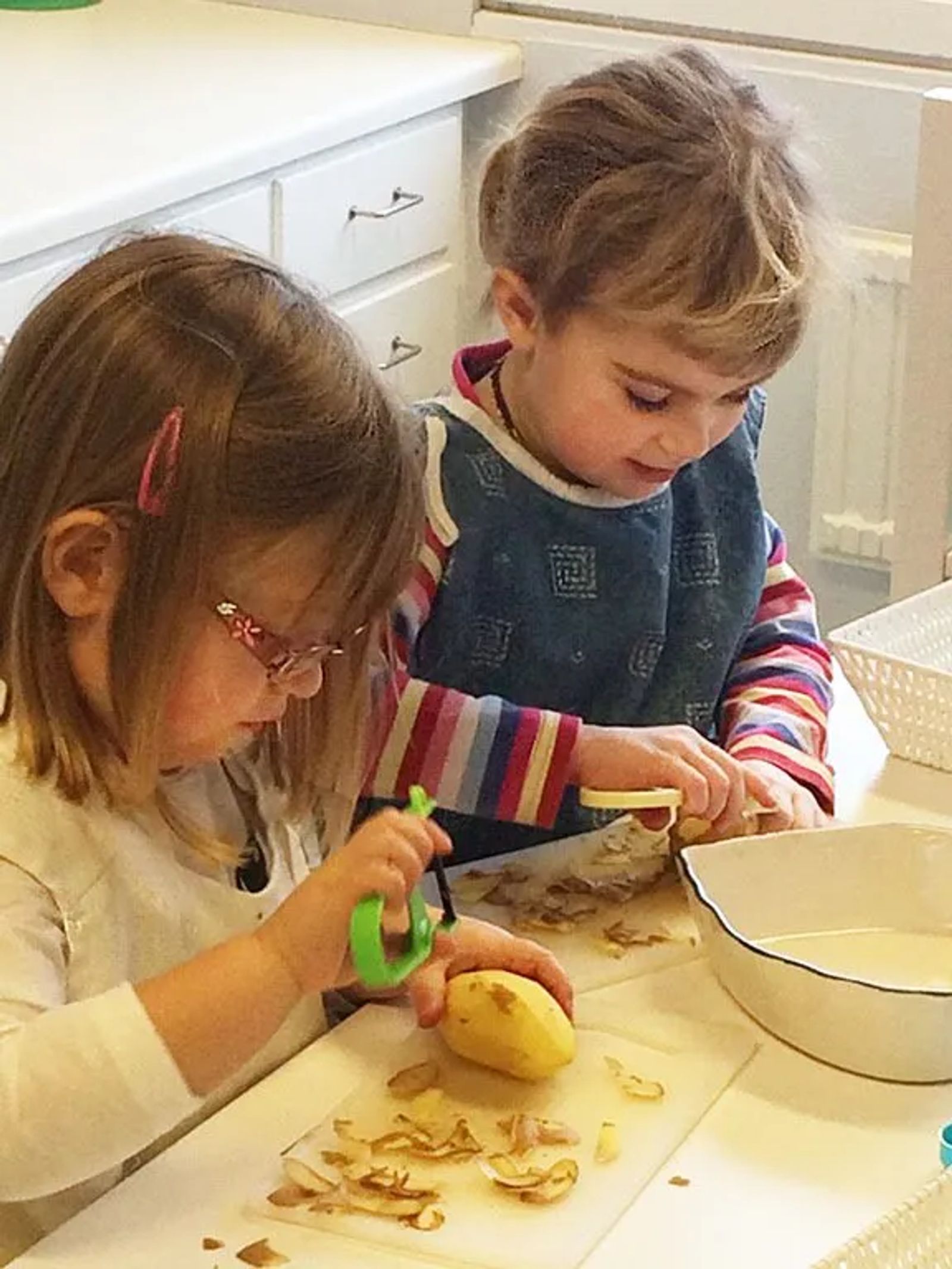Conceptos Montessori que puede utilizar en casa
"Estas palabras revelan las necesidades internas del niño: 'Ayúdame a hacerlo solo'". ~ María Montessori
 Los padres de hoy buscan formas de fomentar la confianza e independencia de sus hijos.
Los padres de hoy buscan formas de fomentar la confianza e independencia de sus hijos.

Casi un siglo después, las sabias palabras de María Montessori siguen siendo válidas. Los padres de hoy, entre los que me incluyo, buscamos formas de fomentar la confianza y la independencia de nuestros hijos. No temas: puedes beneficiarte de la sabiduría de Montessori en casa.
Uno de los conceptos centrales del método Montessori es lo que Montessori llamaba el "entorno preparado". Cuando preparamos el entorno de forma que el niño pueda hacerlo por sí mismo, el entorno (y no el adulto) se convierte en el maestro. Ahora el niño puede seguir a su propio maestro interior.
Cuando el niño asume una tarea de su propia elección y se le permite trabajar en ella sin corrección, ayuda ni ninguna otra interrupción, gana en muchos sentidos. No sólo aprende una nueva habilidad, sino que también se siente realizado y orgulloso de dominar la tarea. Esto contribuye en gran medida a desarrollar la confianza y la autosuficiencia.
 El niño puede ver por sí mismo si ha completado correctamente la tarea o si debe intentarlo de nuevo.
El niño puede ver por sí mismo si ha completado correctamente la tarea o si debe intentarlo de nuevo.

Un entorno bien preparado es ante todo autocorrectivo. Esto significa que el adulto no tiene que decirle al niño que ha completado bien o mal una tarea, ni corregir sus errores. El niño puede ver por sí mismo si ha completado correctamente la tarea o si necesita intentarlo de nuevo. Por ejemplo, si la tarea consiste en verter agua de una jarra en un vaso, el niño puede ver claramente si lo ha conseguido, es decir, si el vaso está lleno y no se ha derramado agua, o si todavía le queda trabajo por hacer. Limpia el agua derramada y vuelve a intentarlo. No necesita que el adulto le corrija mientras trabaja. Esto es lo que quiero decir con que el entorno se convierte en el maestro. El niño no necesita motivación, instrucción o corrección externas. Desarrolla su propia guía interior. Su recompensa es la satisfacción de la realización personal. E incluso los niños muy pequeños son capaces de lograr más de lo que te imaginas, hasta que les das la oportunidad.
¿Le gustaría que su hijo se beneficiara de un "entorno preparado" en casa? He aquí algunas maneras (tomadas de las aulas Montessori) de llevar un poco de Montessori a casa:
Cubbies y abrigos
Dispón de una zona donde tu(s) hijo(s) pueda(n) colgar su propio abrigo. Una fila de perchas o ganchos a la altura de los niños será suficiente. Dependiendo del clima y de la estación, también puede haber un estante o cubículo para sombreros, guantes, botas, etc. Todo debe estar al alcance del niño. Si tienes que colgarle el abrigo o ayudarle a alcanzar las estanterías, no sirve de nada. El niño debe poder hacer la tarea sin ayuda. Incluso un niño muy pequeño aprenderá rápidamente la rutina. Antes de que se dé cuenta, su hijo se quitará el abrigo y lo colgará siempre, y todo él solo.
Lo básico para el baño
 Los orinales para niños son imprescindibles.
Los orinales para niños son imprescindibles.

El cuarto de baño es otro lugar ideal para fomentar la autonomía. Un taburete robusto desde el que el niño pueda alcanzar el lavabo, el jabón y una toalla de manos es fundamental. Los orinales de tamaño infantil también son imprescindibles (y una gran ayuda para aprender a usar el orinal). Haz que lavarse las manos forme parte de tu rutina diaria (antes de las comidas, después de jugar al aire libre, etc.) Con constancia y accesibilidad, tu hijo adquirirá el saludable hábito de lavarse las manos y ganará confianza en sí mismo, todo a la vez.
Logros en la cocina
Reconozcámoslo: la mayoría de nosotros pasamos mucho tiempo en la cocina. Aproveche este tiempo para proporcionar a su hijo algunos lugares adecuados para que esté con usted. Empiece por un estante bajo (tal vez en la despensa) y llene esta zona designada con tentempiés como frutos secos, galletas saladas, galletas saladas, cereales secos, etc. Puede ser útil colocar los alimentos en recipientes fáciles de abrir. En otra zona al alcance de la mano, como un armario bajo, tenga las tazas, los cuencos, los platos, las servilletas, etc. del niño. Ten también artículos de limpieza, como toallitas de cocina, una pequeña escoba de mano y un recogedor, y una papelera. Añade una mesita y una o varias sillas y ¡listo! Tu hija tiene todo lo que necesita para merendar, comer e incluso recoger... ella sola. Ella se siente orgullosa y realizada, y tú tienes un poco más de tiempo para preparar la cena.

Los niños también pueden ayudar con los preparativos de la cena, como lavar las verduras o mezclar los ingredientes, si tienen una forma de llegar a las superficies de trabajo. Existe un gran artilugio llamado torre de aprendizaje Montessori, o torre de seguridad, que es básicamente un taburete de altura regulable con laterales. Es una forma portátil y segura de incluir a tu hijo en las actividades de la cocina.
He aquí otras oportunidades de aprendizaje inspiradas en la cocina: verter (tanto líquidos como cereales, judías secas o arroz), poner la mesa, cortar, pelar, utilizar cucharas, apilar (ollas, sartenes o cuencos) y clasificar (cubiertos, por ejemplo).
Al participar de forma independiente en cualquiera de estas sencillas actividades, su hijo está adquiriendo habilidades esenciales para la vida, ¡y mucho más! Estas tareas diarias enseñan coordinación, equilibrio, orden, secuenciación, motricidad fina y gruesa y, sobre todo, independencia, confianza y autoestima.
"Es después de esto cuando el niño, que ya puede andar y se siente seguro de su fuerza, empieza a fijarse en las acciones de los que están a su alrededor, e intenta hacer las mismas cosas. En este período imita no porque alguien le haya dicho que lo haga, sino por una profunda necesidad interior que siente." (Maria Montessori, La mente absorbente)




















